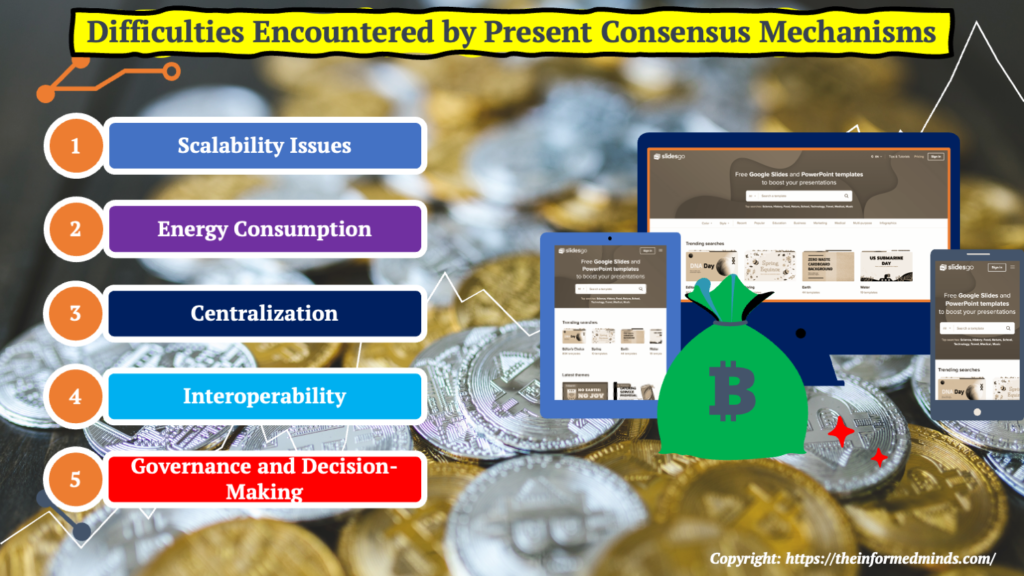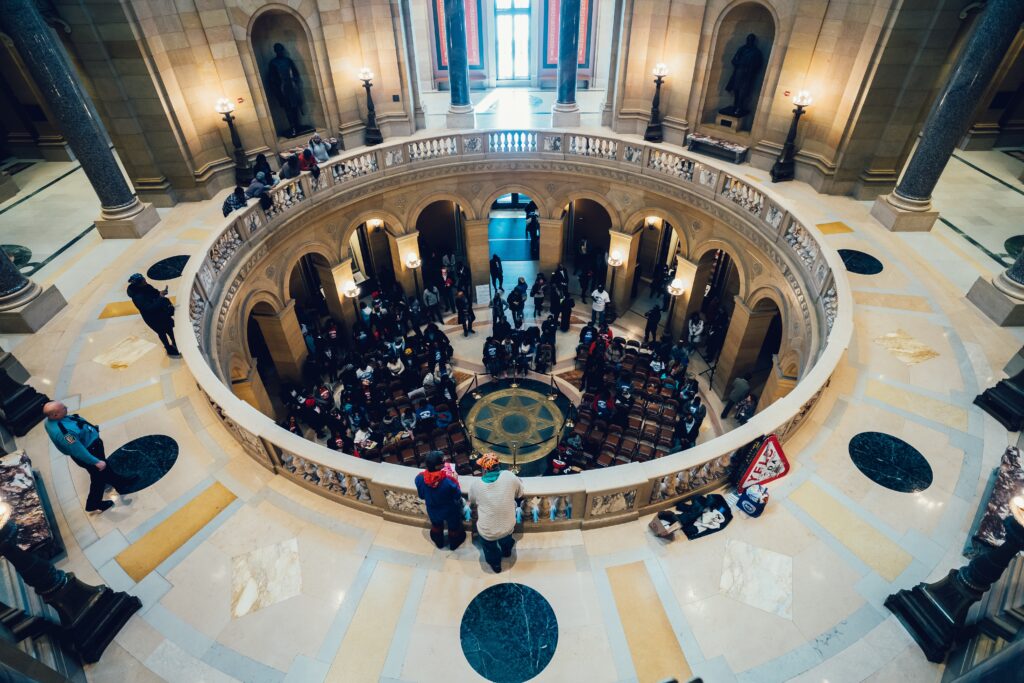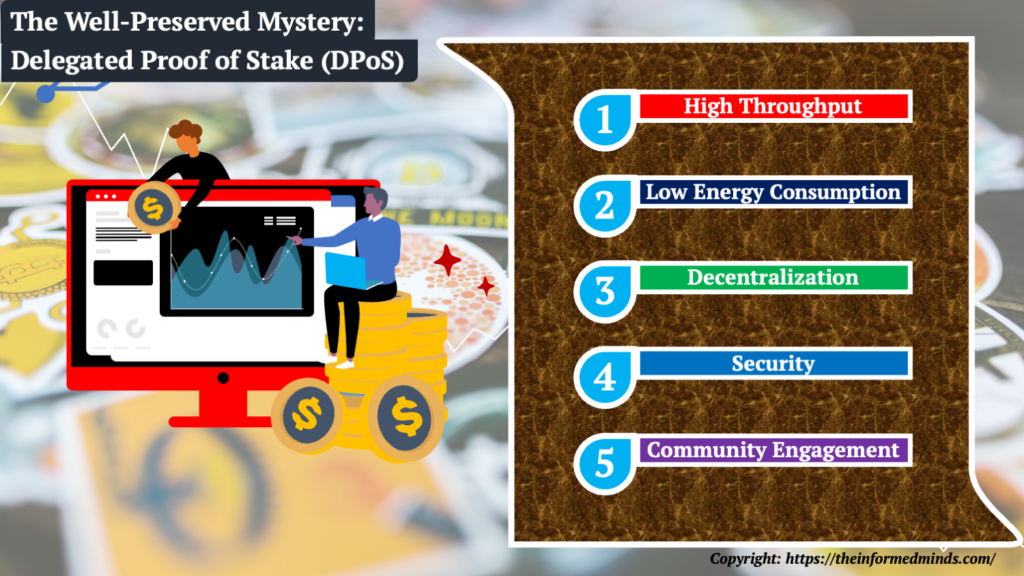To Share is to Show You Care!
In the dynamic world of blockchain technology, achieving an efficient and robust consensus mechanism is key to unlocking the true potential of this revolutionary innovation. In this blog post, we will unveil the best-kept secret to enhance trust and crush inefficient consensus mechanisms in the blockchain ecosystem in 2023.
1. The Importance of Consensus Mechanisms in Blockchain

Blockchain technology relies on consensus mechanisms to validate and record transactions securely. Without a dependable consensus mechanism, the entire blockchain network becomes vulnerable to fraudulent activities and unreliable data. The two most common consensus mechanisms are Proof of Work (PoW) and Proof of Stake (PoS).
2. Challenges Faced by Current Consensus Mechanisms

2.1 Scalability Issues

Blockchain networks based on PoW and PoS often face difficulties in handling a high number of transactions per second. This scalability problem can hinder the widespread adoption of blockchain in applications requiring quick and numerous transactions.
2.2 Energy Consumption
PoW, particularly in the case of Bitcoin, is infamous for its massive energy consumption. Miners compete to solve complex mathematical puzzles, which is essential for securing the network but is energy-intensive and raises environmental concerns.

2.3 Centralization

PoS systems can lead to centralization. In PoS, validators are chosen based on the number of coins they hold and are willing to stake as collateral. This can result in a concentration of wealth and influence within the network.
2.4 Interoperability
Achieving interoperability between different blockchains and consensus mechanisms remains a challenge. As the blockchain ecosystem grows, ensuring that various networks can communicate and transact seamlessly is a significant hurdle for current consensus mechanisms.

2.5 Governance and Decision-Making

Many consensus mechanisms lack effective governance models for making decisions about network upgrades and changes. This can lead to disputes and disagreements among network participants, slowing down the evolution and adaptability of the blockchain. Effective governance structures are essential to address this challenge.
3. The Best-Kept Secret: Delegated Proof of Stake (DPoS)
Delegated Proof of Stake (DPoS) is a consensus mechanism that has been gaining attention in the blockchain community. It addresses the challenges posed by traditional PoW and PoS systems and brings a more efficient and secure solution to the table.

Here’s why DPoS is the game-changer,
3.1 High Throughput
DPoS stands out for its high throughput, meaning it can process a significantly larger number of transactions per second compared to PoW and PoS. This makes it ideal for applications that require rapid transaction processing, such as payment networks and decentralized applications (DApps).
3.2 Low Energy Consumption
One of the significant advantages of DPoS is its significantly lower energy consumption compared to PoW. DPoS replaces energy-intensive mining with a system where a fixed number of delegates are responsible for validating transactions. This greatly reduces the environmental impact and energy costs associated with blockchain operations.
3.3 Decentralization
DPoS promotes decentralization by allowing token holders to vote for delegates who validate transactions. These delegates are responsible for maintaining the network’s integrity. This approach ensures a fair distribution of power and influence, preventing a concentration of control within the network.
3.4 Security
DPoS provides robust security features, making it resistant to various attacks. Its structure of elected delegates and a checks-and-balances system ensures the network’s stability and security, enhancing trust within the blockchain ecosystem.
3.5 Community Engagement
DPoS encourages active community participation and engagement in network decision-making. Token holders have a say in selecting delegates, creating a sense of involvement and ownership in the blockchain ecosystem. This engagement can lead to a more vibrant and accountable blockchain network.
4. Implementing DPoS in 2023

As blockchain technology evolves, it’s crucial to stay up-to-date with the latest advancements. To implement DPoS in 2023 and crush inefficient consensus mechanisms, consider these steps.
4.1 Choose a Compatible Blockchain

To implement DPoS, select a blockchain platform that supports this consensus mechanism. For instance, Ethereum 2.0 and EOS are notable blockchains that have adopted DPoS as a core element of their design.
4.2 Select Trustworthy Delegates
When participating in a DPoS-based blockchain, you’ll have the opportunity to vote for delegates. It’s essential to research and choose delegates you trust to act in the best interests of the network. Their role is pivotal in maintaining the blockchain’s integrity.

4.3 Stay Informed

As with any technology, the blockchain landscape is continually evolving. Stay informed about updates and improvements related to DPoS and the blockchain platform you choose. Regular updates and staying engaged with the community will help you keep your blockchain network secure and efficient.
4.4 Network Security Measures
Implement robust security measures to protect against potential threats and attacks. This can include the use of advanced encryption techniques, regular security audits, and a well-defined incident response plan to safeguard your DPoS-based blockchain network.

4.5 Scalability Planning

As you adopt DPoS in 2023, plan for scalability from the outset. Be prepared to adjust the network’s capacity to accommodate increased transaction volumes and user activity as your blockchain applications grow in popularity. Scalability is essential for ensuring a seamless user experience and the continued success of your DPoS-based blockchain.
Conclusion
In 2023, the blockchain world is ripe for transformation, and the best-kept secret to achieving this is Delegated Proof of Stake (DPoS). By adopting DPoS and its efficient consensus mechanism, you can revolutionize your blockchain projects, enhance trust, and conquer the challenges faced by outdated PoW and PoS systems. Stay ahead of the curve and embrace DPoS to lead the blockchain revolution into a brighter future.
Frequently Asked Questions
Q1: Which consensus mechanism is not sustainable?
A: The Proof of Work (PoW) consensus mechanism is often considered unsustainable due to its high energy consumption and environmental impact.
Q2: What is the result of failure of consensus mechanism?
A: The failure of a consensus mechanism can lead to blockchain network issues such as double spending, forks, and lack of agreement on the state of the ledger.
Q3: Which consensus algorithm is least energy efficient?
A: Among popular consensus algorithms, Proof of Work (PoW) is the least energy-efficient due to its resource-intensive mining process.
Q4: What are the advantages and disadvantages of consensus mechanism?
A: Advantages of consensus mechanisms include security and trust, while disadvantages include energy consumption and scalability limitations.
Q5: What are the three examples of consensus mechanisms?
A: Three examples of consensus mechanisms are Proof of Work (PoW), Proof of Stake (PoS), and Delegated Proof of Stake (DPoS).
Q6: Which consensus mechanism is best?
A: The best consensus mechanism depends on the specific use case and requirements. Proof of Stake (PoS) and Delegated Proof of Stake (DPoS) are considered more energy-efficient alternatives to PoW.
Q7: What are the key issues of the distributed consensus problem?
A: The key issues of the distributed consensus problem include ensuring agreement among participants, preventing double spending, and maintaining network security.
Q8: What is an example of a consensus problem?
A: One example of a consensus problem is reaching an agreement on the order of transactions in a blockchain to prevent double spending.
Q9: What is the problem of consensus?
A: The problem of consensus in distributed systems is the challenge of reaching agreement among multiple participants on a single, consistent state of data.
Q10: Which among the following types of blockchain has the toughest consensus mechanism?
A: Public blockchains, especially those using Proof of Work (PoW), often have the toughest and most resource-intensive consensus mechanisms.
Q11: Which consensus algorithm has the highest efficiency?
A: Delegated Proof of Stake (DPoS) is known for its efficiency among consensus algorithms, as it allows for faster transaction confirmations and requires less energy.
Q12: Which of these is a major limitation of blockchain technology?
A: A major limitation of blockchain technology is its scalability, as many blockchain networks struggle to handle a high volume of transactions quickly.
Q13: What are the weaknesses of consensus theory?
A: The weaknesses of consensus theory in distributed systems include potential for Byzantine faults, scalability challenges, and the need for energy-intensive consensus mechanisms like PoW.
Q14: What are the limitations of consensus?
A: The limitations of consensus include the trade-off between security and scalability, the energy consumption of certain consensus mechanisms, and the risk of network forks.
Q15: What is the limitation of consensus theory?
A: A limitation of consensus theory is that it may not provide a perfect solution for achieving agreement in all distributed systems, especially in the presence of malicious actors or network failures.
The Informed Minds
I'm Vijay Kumar, a consultant with 20+ years of experience specializing in Home, Lifestyle, and Technology. From DIY and Home Improvement to Interior Design and Personal Finance, I've worked with diverse clients, offering tailored solutions to their needs. Through this blog, I share my expertise, providing valuable insights and practical advice for free. Together, let's make our homes better and embrace the latest in lifestyle and technology for a brighter future.

